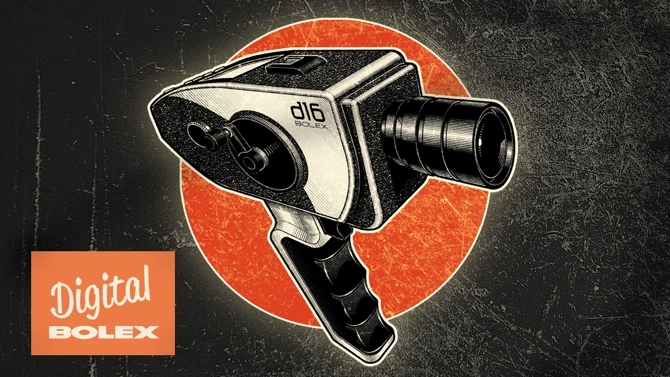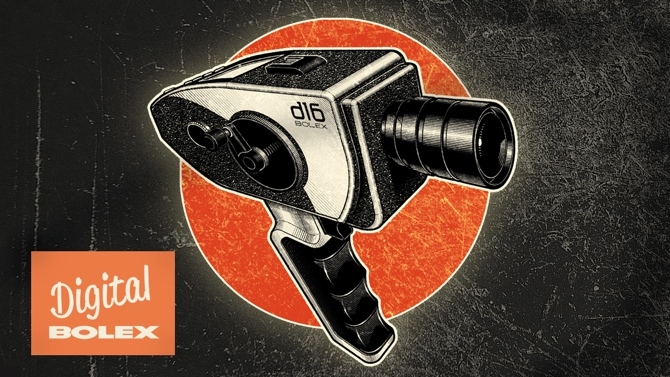
 Digital Bolex
Digital Bolex
With news that Digital Bolex is to stop making cameras, today's RedShark Replay takes us back to December 2012 and a time when a Kickstarter-funded digital 16mm camera was one of the year's most intriguing stories. Peter Haas talked to Joe Rubinstein, co-founder of Digital Bolex.
I believe it is important to note that this camera has not yet been released. A working prototype (the one used to film Elle’s short film “One Small Step”) was demoed at the SxSW film festival and several concept models have been assembled. Joe says they’re about a month away from having a complete in-body working model. This is a piece that tells the story of the camera’s origins and philosophy.
When I first heard about the release of the Bolex’s first digital camera, it literally sounded like the opening of a Fairytale:
“Once upon a time, motion picture cameras that created high-quality images were affordable for all filmmakers on any budget. Consumer 8mm and 16mm cameras like the original Bolex shot footage that could be projected on any movie theater screen… In today’s digital market, ‘affordable’ and ‘consumer’ have become synonymous with ‘low-quality’…”
“It doesn’t have to be that way.” Claimed Joe Rubinstein and Elle Schneider, the heads of Digital Bolex. In March of 2012, Joe and Elle took over a year's worth of planning (including the production of a film shot with a Digital Bolex prototype) to the masses. With the consent of Bolex of Switzerland and using the popular crowd-source funding website “KickStarter” they pitched their camera to the world.
Enter the D16
Enter the D16, a super-16mm format camera that captures true 2K RAW images (2048x1152) in Adobe’s RAW CinemaDNG format. The D16 would allow filmmakers to produce movie theater-quality images for a price of just over $3,000.
Beyond the typical swag of t-shirts, posters, and stickers commonly tendered on KickStarter, Digtal Bolex offered pre-sales of the first 100 D16 Digital Bolex cameras.
I, along with much of the internet took notice.
“WOW! My mother would judge me if I put expletives on the Internet so I don't know what else to say! Thank you so much for your support, everyone.” Elle wrote on their KickStarter blog. They had used the KickStarter to gauge public interest, finding themselves selling ninety-one of the first one-hundred cameras in only two days. By the campaign’s close in April, Digital Bolex had raised a total of $262,661, far exceeding their $100,000 goal.
By filmmakers, for filmmakers
“The D16 is a camera for filmmakers, made by filmmakers,” Joe told me over a Skype conversation, commenting that a big part of the goal was to “create a camera that would easily fit into your current 16mm camera rig: you can pop it onto your tripod, use the same lenses, same batteries: practically everything.”
A big part of making this camera fit into the celluloid paradigm is the selection of a CCD chip that bares a 1:1 ratio with Super 16mm film. Joe points out that a number of other cameras have sensors that fall between standard film gauges, dramatically reducing the user’s options when it comes to lenses. The D16 allows a cinematographer to use the super and standard 16mm lenses they already own, as well as a wide range of “great vintage glass that’s out there.”
CCD sensor was a simple choice
The choice of CCD over CMOS was simple. Aside from the fact there is no rolling shutter on CCDs, Joe told me that they selected these chips based on their "analog" nature and that the CCD’s design would give them more control over the way the camera records the image.
When asked about the benefits of 2K RAW versus many of the 4K formats, Joe and Elle agreed it was a decision rooted in balancing craft and practicality.
“Use the [4K] tools if they’re good for you, but in most cases they aren’t. Details sometimes come in too sharp.” Claims Elle, who also works as a DP, “When you have more resolution than you do in real life, you have the audience looking at a lamp in the background that is swaying and not concentrating on the story.”
Additionally “one of the arguments about 4K is that you have all of this ability to ‘push in’ on the image,” says Elle “but with a little preparation, you could have planned on getting a close up.”
“It’s sort of lazy [as an excuse],” agrees Joe saying that moving the camera changes how you’re communicating “when you traditionally did shots such as close ups, you typically moved the camera angle slightly, which has become part of our cinematic language,” something they both agree that simply using a ‘reframe’ effect in post-production violates.
1:1 image to sensor ratio
Specifics of resolution aside, the D16 “is about delivering a 1:1 [quality] image to theatres” and the camera-making duo believes that theatre owners will have a large say in the trend towards 4K resolutions. “Over the years these theatres have invested tens of thousands of dollars in their current [2K] projection systems. They’re still working on recouping their costs of installing that system.”
The planned recording format for the D16 is Cinema DNG, an open source RAW format released through Adobe Labs. DNG (sometimes called Digital Negative) has become popular in still photography due to the unprocessed nature in which it stores images. Cinema DNG is Adobe’s attempt at establishing similar standard for motion pictures.
“RAW Cinema is in its infancy.” Joe tells me. Even with the growing number of companies that offer RAW cameras such as Ikonoskop and Black Magic Design, “far less than 1% of current productions shoot RAW.” He hopes that a spirit of collaboration and friendly competition will help spread the gospel of RAW Cinema.
$3K price-tag
It needs to be said that this is not the first time the promise of “2K for $3K” has appeared on the web. RED Digital Cinema once made a promise with SCARLET, which eventually released at a price more than double the projected cost. But Joe and Elle are confident that their camera will reach its mark.
One of the ways Digital Bolex has able to maintain their attractive $3K price point is the lack of expensive proprietary hardware. All the components found in the D16, from the TrueSense CCD chip to the circuit boards, are all currently available on the open market.
In addition to the open-source component mindset, Digital Bolex benefits from their small size. Most camera companies are producing cameras to fit within a certain price market. For example, Canon, who popularized the use of DSLR cameras for shooting video, has two very distinct markets at very different price points: affordable DSLR EOS cameras and their Cinema EOS series.
Making their own market
Under typical corporate philosophy, cameras in these markets should not be competing with each other, so technology advances made in the more expensive cameras rarely trickle down to the more consumer priced market. Since Digital Bolex is designing for a single market, they don’t need to readjust prices to reflect a greater corporate pricing structure.
There have been delays. The camera, originally scheduled for release in August of 2012 has been pushed back to the beginning of 2013.The team points out that, yes, some parts of the process have taken longer than initially expected.
Joe: "So many companies together to create a single product… in a lot of ways, this is a partnership between many companies… there’s a lot of coordination that goes into it... and making sure that none of that communication gets dropped and is correct across language barriers [has] been a big thing for us.”
Delays, but it's getting better all the time
They enthusiastically point out that a number of the delays have been caused by upgrades to the camera’s original design. Joe notes that many of the delays have been particularly due to the fact they have adjusted the camera’s specifications based on conversations with people who participated in the Kickstarter project.
“It’s a new interesting way to develop a product … it’s going to be unique because [the D16] is a product in which people participated in the design. It’s important for us to make a camera that makes sense to [filmmakers], that makes sense two, five possibly ten years from now, instead of just faster or cheaper.”
In the spirit of affordable professional products Joe and Elle are very excited to be working with the filmmaking community to develop affordable accessories including additional lens mounts, a set of Digital Bolex branded lenses and an HD-SDI expansion box.
Cool things down the line
“We can’t say too much, but there are some really cool things coming down the line and we’re very excited.”
The first run of 100 cameras purchased by the KickStarter backers are expected to ship in early 2013. Pre-orders for the next “much larger lot” of cameras will begin around that same time.
For more information about Digital Bolex, and the D16 visit their website at: digitalbolex.com
Tags: Business


Comments